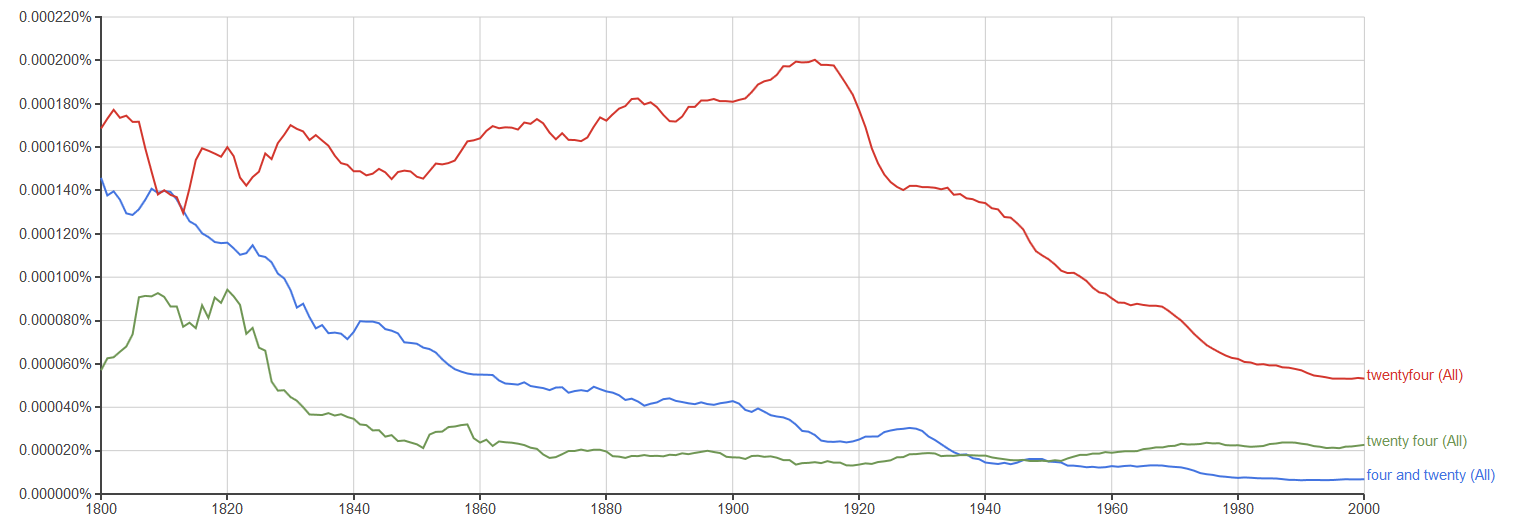19th century English texts occasionally use Germanic-style number words, such as "four-and-twenty", but the same text would also have the modern "twenty-four" in places (see e.g. Conan-Doyle for several examples).
How did the usage of germanic-style numbers change historically? When did the Germanic forms fall out of use?
(I have asked this question previously on Sprachlog (German) and got a short answer by A.Stefanowitsch, but would appreciate any additional input.)


